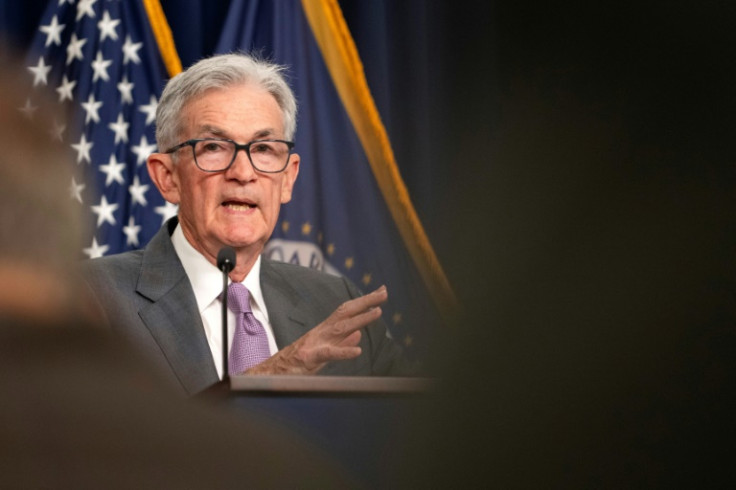
The ongoing global stock sell-off has fueled calls for the US Federal Reserve to lower interest rates swiftly and decisively, with some analysts now calling for it to make an emergency cut before its September rate decision.
The futures markets, which as recently as last week expected a single quarter percentage-point cut at the US central bank's next rate decision in September, now see a half-point cut as much more likely, according to data from CME Group.
"The rate tide has quickly turned," Bank of America economists wrote in a recent note to clients, adding they now see a September rate cut as "a virtual lock."
The US central bank has held its benchmark lending rate at a two-decade high for the past year as it battles to return inflation to its long-term target of two percent.
After a small uptick earlier this year, annual headline inflation is now falling once more toward the target, while the US economy is still growing and the labor market has weakened.
Against this backdrop, Fed Chair Jerome Powell signaled last week that the first rate cut could come "as soon as" September.
But some analysts fear that may not be soon enough, as the markets have responded in dramatic fashion to last week's below-target US jobs report, which raised fears that the US was entering a recession.
"I'm calling for a 75-basis point emergency cut in the Fed funds rate, with another 75-basis point cut indicated for next month at the September meeting," Wharton School professor emeritus of finance Jeremy Siegel told CNBC on Monday morning. "And that's minimum."
"I wasn't calling for an inter-meeting cut, because that might signal panic," the Nobel prize-winning US economist Paul Krugman wrote in a social media post on Monday.
"But since we may be seeing a panic anyway, that argument loses its force," he said, adding: "Real case for an emergency cut soon."
All three major indices on Wall Streets fell again on Monday as investors continued selling AI-related tech stocks and locking in recent gains.
Underscoring the market's concerns, the CBOE Volatility Index-- commonly known as Wall Street's "fear gauge" -- spiked in early trading to a high not seen since the early days of the Covid-19 pandemic in 2020.
But speaking to CNBC before markets opened, Chicago Fed president Austan Goolsbee urged caution about reading too much into one jobs report.
"As you see jobs numbers come in weaker than expected but not looking yet like recession, I do think you want to be forward-looking of where the economy is headed," he said.
"The payroll jobs number is plus or minus 100,000 a month, so be a little careful over concluding about things in the margin of error," he continued, adding that if the US economy deteriorated, the Fed would "fix it."
While some analysts are now calling for emergency rate cuts, others have continued to voice support for a September move.
"It is usually a mistake to infer too much from one jobs report absent a major shock that abruptly changes the picture," Goldman Sachs economists David Mericle and Manuel Abecasis wrote in an investor note published Sunday, while raising their forecast for a recession to 25 percent, up 0.1 percentage-point.
"We changed our Fed forecast after the employment report to include an initial string of three consecutive 25bp (basis point) rate cuts in September, November, and December," they said, adding an additional quarter-point cut into their forecast for this year.
Whether it moves now or in a September, any Fed cut before the US presidential election in November will thrust the independent US central bank into the middle of the political campaign between former Republican president Donald Trump and Democratic vice president Kamala Harris.
Trump has previously accused Powell -- whom he first nominated to run the Fed -- of displaying political favoritism toward the Democratic Party, and suggested that he would not reappoint the central banker as Fed chair if he wins in November.







